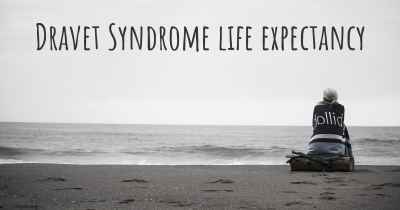Is it advisable to do exercise when affected by Dravet Syndrome? Which activities would you suggest and how intense should they be?
See if it is advisable for people with Dravet Syndrome to practice sports and which ones are the most recommended if you have Dravet Syndrome

Is it advisable to do exercise when affected by Dravet Syndrome?
Dravet Syndrome is a rare and severe form of epilepsy that typically begins in infancy. It is characterized by frequent and prolonged seizures, developmental delays, and cognitive impairments. Given the complex nature of this condition, it is important to approach exercise with caution and consult with a healthcare professional before starting any exercise program.
While exercise can have numerous benefits for individuals with various health conditions, including epilepsy, it is crucial to consider the specific needs and limitations of someone with Dravet Syndrome. The intensity and type of exercise should be tailored to the individual's abilities and seizure control.
Benefits of Exercise for Individuals with Dravet Syndrome
Engaging in appropriate exercise can offer several potential benefits for individuals with Dravet Syndrome:
- Improved cardiovascular health: Regular exercise can help strengthen the heart and improve overall cardiovascular fitness.
- Enhanced muscle strength and flexibility: Certain exercises can help improve muscle strength and flexibility, which may be beneficial for individuals with mobility challenges often associated with Dravet Syndrome.
- Weight management: Maintaining a healthy weight is important for overall well-being, and exercise can play a role in weight management.
- Mood enhancement: Exercise has been shown to release endorphins, which can improve mood and overall mental well-being.
Choosing the Right Activities
When selecting exercises for individuals with Dravet Syndrome, it is crucial to consider their specific abilities, limitations, and seizure control. Here are some activities that may be suitable:
- Low-impact exercises: Activities such as walking, swimming, or cycling can be gentle on the joints and provide cardiovascular benefits without placing excessive stress on the body.
- Yoga: Yoga can help improve flexibility, balance, and relaxation. It offers a low-impact option that can be modified to accommodate different abilities.
- Strength training: Light resistance exercises using bands or light weights can help improve muscle strength and tone. It is important to start with low resistance and focus on proper form.
- Balance exercises: Practicing balance exercises, such as standing on one leg or using a balance board, can help improve stability and reduce the risk of falls.
Exercise Intensity and Safety Precautions
When it comes to exercise intensity, it is crucial to start slowly and gradually increase the duration and intensity of the activities. Here are some important considerations:
- Individualized approach: Each person with Dravet Syndrome is unique, and their exercise program should be tailored to their specific needs and abilities.
- Monitoring: It is important to closely monitor the individual during exercise for any signs of fatigue, discomfort, or increased seizure activity. If any concerning symptoms arise, the exercise should be stopped immediately.
- Hydration: Ensuring proper hydration before, during, and after exercise is essential, as dehydration can potentially trigger seizures.
- Temperature regulation: Individuals with Dravet Syndrome may have difficulty regulating body temperature, so it is important to exercise in a controlled environment and avoid overheating.
- Seizure precautions: It is crucial to take appropriate seizure precautions, such as having a trained individual present during exercise, ensuring a safe environment, and being prepared with any necessary rescue medications.
Conclusion
While exercise can offer numerous benefits for individuals with Dravet Syndrome, it is essential to approach it with caution and consult with a healthcare professional. The exercise program should be tailored to the individual's abilities, limitations, and seizure control. By choosing appropriate activities, starting slowly, and taking necessary safety precautions, individuals with Dravet Syndrome can potentially enjoy the physical and mental benefits of exercise while minimizing risks.
Posted Feb 18, 2017 by Nicholas 1000
Posted Dec 2, 2017 by Anna 2020
Posted Dec 19, 2017 by Antigoni 2500








